NOBEL PRIZES IN JAPAN

Leo Esaki Japan has won 18 Nobel prizes: 15 in the scientific fields of chemistry, physics and medicine (including seven in chemistry), two in literature and one Peace Prize. Nine of those who have won Nobel prizes have done so since the year 2000, giving Japanese the second most prizes in that period after the United States. Of the 15 who won the prize in the sciences five left for the United States when they were young.
Japan’s 18 Nobel Prize winners are: 1, 2) Akira Suzuki. Eiichi Negishi (2010, Physics); 3, 4.5 ) Yoichiro Nambu, Makoto Kobayashi and Toshihide Masukawa (2008, physics); 6) Osamu Shimonmura (2008, chemistry); 7) Kochi Tanaka (2002, chemistry); 8) Matatoshi Koshiba (2002, physics); 9) Ryojo Noyori (2001, chemistry); 10) Hideki Shirakawa (2000, chemistry); 11) Kenzaburo Oe (1994, literature); 12) Susumu Tonegawa (1987, medicine); 13) Kenichi Fukai (1981, chemistry); 14) Eisaku Sato (1974, peace); 15) Leo Esaki (1973, physics); 16) Yasunari Kawabata (1968, literature); 17) Shinichiro Tomonaga (1965, physics); 18) Hideki Yukawa (1949, physics).
Japan’s first Nobel laureate Hideki Yukawa (1907-1981) won the prize in physics four years after the end of World War II. Fukai won his for his theories on mechanism of chemical reactions. Tomonaga won the Nobel Prize for his basic research in the field of quantum electrodynamics.
Hideki Yukawa (1907- ) won the Nobel prize in physics in 1949 for his theoretical prediction of the subatomic particle meson. The first Japanese scientist to win a Nobel physics, he was born in Tokyo into a family of professors. He did his groundbreaking work at Kyoto University and was struck with the insight that some other particle was needed to hold an atomic nucleus together one night in 1934 when he couldn't sleep. The particle was originally supposed to be named the yukon in Yukawa's honor but scientists worried about confusion with the Canadian territory by the same name.
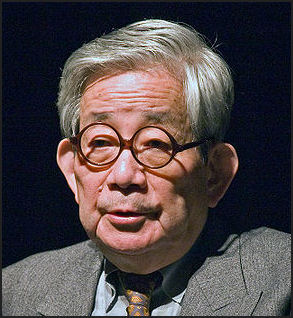
Kenzaburo Oe Leo Esaki (1925- ), who holds a Ph.D. from Tokyo University and is now President of the Yokohama College of Pharmacy, won his Nobel Prize in 1973 in physics for his work in quantum mechanics, in particular his explanation of the tunneling phenomenon in semiconductors, and the invention of the double diodem known as Esaki diode. Esaki worked for a while at Sony and IBM and was awarded the Grand Cordon of the Rising Sun in 1998. Of the 16 Nobel Prizes that Japanese have won, seven of them have been in physics.
Japanese-born Susumu Tonegawa (1939- ) of the Massachusetts Institute of Technology won the Nobel Prize in Medicine in 1987 for his discovery of a mechanism by which antibody genes exist as components in an organism and are assembled in various forms in the growth process from embryo to adult. The Japanese were thrilled until Toneawa said that he never would have achieved the level of success he did had he not he not studied abroad. Tonegawa was born in Nagoya in 1939. He graduated from Kyoto University and studied at the Salk Institute in the United States and the Basel Research Institute for Immunology in Switzerland before taking his position at MIT in 1981. He is now involved on the study of the brain.
Hiroshima hosted the 11th World Summit of Nobel Peace Prize laureates in November 2010. Among those who attended were the Dalai Lama, anti-mine activist Jody Williams, former South African President Frederik Willem de Klerk and former director general if the Atomic Energy Agency Mohamed El-Baradei.
Websites and Resources
Links in this Website: SCIENCE IN JAPAN Factsanddetails.com/Japan ; NOBEL PRIZES IN JAPAN Factsanddetails.com/Japan ; UNIVERSITIES IN JAPAN Factsanddetails.com/Japan ; CLASSIC 20TH CENTURY JAPANESE LITERATURE Factsanddetails.com/Japan ; MODERN LITERATURE AND BOOKS IN JAPAN Factsanddetails.com/Japan
Good Websites and Sources: Nobel Prize.org nobelprize.org or do a search nobelprize.org ; Kids Web Japan web-japan.org/kidsweb ; Wikipedia List of Nobel Laureates by Country (jump to Japan ) Wikipedia
Good Websites and Sources on Science: Japan Science and Technology Agency jst.go.jp/EN ; MEXT, Ministry of Education, Culture, Sports, Science and Technology mext.go.jp/english ; Science Links Japan sciencelinks.jp ; Stanford University J-Guide to Science and Technology jguide.stanford.edu ;Japan Advanced Institute of Science of Technology jaist.ac.jp ; Japan Institute of Invention and Innovation jiii.or.jp/english ; Statistical Handbook of Japan Science and Technology Chapter stat.go.jp/english/data/handbook ; 2010 Edition stat.go.jp/english/data/nenkan ; News stat.go.jp ; Trends in Japan: Science and Technology web-japan.org/trends/science ; Book: “Japanese Science From the Inside” by Samuel Coleman (Routledge, 2000).
Recent Japanese Nobel Prize Winners
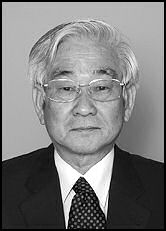
Toshihide Masukawa
2008 Nobel Prize winner Hideki Shirakawa Alan Heeger and Alan MacDiarmid won the Nobel Prize in 2000 for the development of plastics that can carry an electrical charge like a metal in the late 1970s. This discovery is being used today in microscopic electronic components. Shirakawa is a professor at Tsukuba University.
Ryojo Noyori (1938- ), a professor at Nagoya University, won the Nobel Prize in Chemistry 2001 with Americans William Knowles and Prof. K Barry Sharpless for discovering a method of asymmetrical synthesis to separately produce two forms of molecules that appear in mirrorlike images of each other. The breakthrough is expected to improve antibiotics and other common drugs. Noyori is president of Riken, a national research institute that plays a leading in determining the direction of scientific research in Japan.
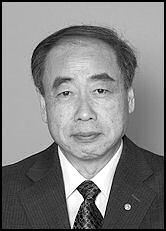
Makoto Kobayashi
2008 Nobel Prize winner Masatosji Koshiba (1926- ) won the Nobel Prize in physics in 2002 along with two American astrophysicists, Raymond Davis of the University of Pennsylvania and Riccardo Giacconi of Johns Hopkins University. Koshiba and Davis won the award for their work in the detection of cosmic neutrinos with huge underground chambers. Koshiba graduated from Tokyo University at the bottom of his class but that didn’t stop him from becoming a prominent professor at the same university. He is now president of the of the Heisei Foundation for Basic Research. See Neutrinos Below
Salaryman Nobel Prize Winner
One of the most unlikely Japanese celebrities of the early 2000s was Koichi Tanaka, a seemingly ordinary salaryman engineer: shy, nerdy and retiring, preferring the solitude of the laboratory to the world of people. But one thing made him different: he won a Nobel Prize.
Tanaka graduated from Tohuku University. At the time he won the award he was an employee of the Kyoto-based Shimadzu Corporation, He won the prize with American John Fenn and Swiss Kurt Wuethrich for his work developing an ionization technique using laser desorption for mass spectrometry of macromolecules. He was first employee of a Japanese company to win the award and the first recipient of the chemistry prize with only a bachelor’s degree.
Tanaka was embraced by the media and the public. For several months he was in the news almost every day. Television cameras followed him as he expressed how nervous he was about giving a speech in English and remembering the correct protocol when he received his award. The more awkward and bashful he was the more the public seemed to embrace him.
Tanaka’s work in mass spectrography has enabled researchers to make three-dimensional images of protein molecules in cells. This has allowed them to identify the proteins and better understand how they work. The discovery has greatly helped scientist study diseases and develop new medicines. Among other things mass spectrography has led to the development of sophisticated doping tests for athletes.
Japanese Nobel Prize Winner in 2008
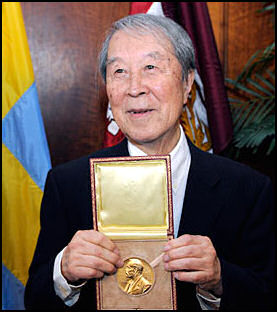
Yoichiro Nambu
2008 Nobel Prize winner Three Japanese and a Japanese -American won Nobel Prizes in 2008. Osamu Shimonmura and two American won the Noble in Chemistry for discovering and developing a glowing jellyfish protein that has helped shed light on such key processes as the spread of cancer, the development of brain cells, the growth of bacteria, damage to cells by Alzheimer’s disease, and the development of insulin-producing cells in the pancreas.
Yoichiro Nambu, a Japanese-American at the University of Chicago, Makoto Kobayashi, director of the Japan Society for the promotion of Science, and Toshihide Masukawa of Kyoto Sangyo University won the Nobel Prize in physics for discovering the origin of broken symmetry that predicts the existence of at least three families of quarks in nature. The scientists wrote paper theorizing the existence of the quarks. The Japanese media announced that three Japanese had won the Nobel Prize; the New York Times announced that two Japanese and an American won it.
In his investigation of superconductivity (a phenomena in which materials offer no resistance to an electrical current) Nambu found that the phenomena could be explained with a concept called “spontaneous symmetry breaking” and then found that situations that defy symmetry create new particles such as the Higgs boson, which is responsible for breaking the symmetry between the electromagnetism and the weak force (two of the four forces of nature), a step towards formulating out the unifying theory that Einstein pursued in the last years of his life.
A speech at the Noble Prize Ceremony — acknowledging the four Japanese Nobel winners — was given in Japanese, a Nobel ceremony first. The year 2008 was the first time four Japanese had been awarded the Nobel Prize in a single year.
Lives of Nobel Prize Winner in 2008
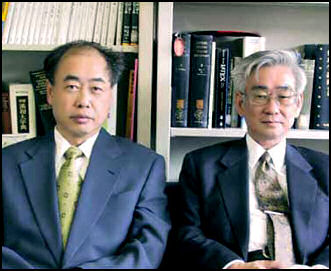
Kobayashi and Masukawa Nambu, Kobayashi, and Masukawa all studied at Nagoya University. Nambu is a naturalized American citizen who was born in Japan and graduated from Tokyo Imperial University before it had any classes in elementary particle physics. In 1961 he announced the discovery the mechanism of spontaneous broken symmetry in subatomic physics. He received half the prize money.
Kobayashi and Masukawa studied together at Nagoya University. The Kobayashi-Masjawa model, presented in a paper in 1973, posited the existence of quantum mechanics effects on the weak force between quarks and showed the existence of at least six kinds of quarks. Before that only three quarks could be confirmed. After that two of the new quarks were discovered as they predicted. The sixth quark was found in 1994 during an experiment at the Fermi National Accelerator Laboratory. After Masukawa won the award twice as many students showed up for his lecture to freshman students “Oscillation and Waves B.”
At the Nobel Prize awards banquet Kobayashi sat next to Sweden’s Queen Silvia and was said to have an animated conversation with her. Masukawa, who shies away from speaking English, sat next to Crown Princess Victoria. Their conversation was said be have been more subdued. Kobayashi gave a short speech and his lecture, earlier, in English. Masukawa gave his lecture in Japanese. Both declined to participate in the ball. After the banquet Kobayashi said, “I’m relieved .” Matsukawa said, “It’s all over.”
Yoichiro Nambu and Spontaneous Symmetry Breaking
Nambu was selected as one of Time magazine’s most important people in 2009. As a youth Nambu was something of a whiz kid. He did high school math when he was in elementary school and taught himself English and German. He served in the Japanese Imperial Army in World War II..
Nambu worked with Albert Eienstein at Princeton between 1952 and 1955 before moving on to the University of Chicago. Nambu’s theory had great bearing on Einstein’s quest to unify all the forces of nature, making the goal more complex but more achievable.
While working at the University of Chicago, Nambu explained that superconductivity — materials which offer no resistance to electricity — could be explained using concept of “spontaneous symmetry breaking.” Many physical laws and behavior up to that time had been explained by laws that were the same in all circumstances — or symmetrical. Nambu discovered that when situations occurred that were not symmetrical new particles were born, and this concept led to a discovery of a whole series of new particles.
One of the first tasks of the large Hadrin Collider, the particle accelerator near Geneva that began operating in 2009, is to find the Higgs bosun, which according to Nambu’s theory is responsible for the breaking of symmetry between electromagnetism and the weak nuclear force.
Osamu Shimonmura and 100,000 Jellyfish
Osamu Shimomura works at the Marine Biological Laboratory in Wood Hole, Massachusetts and the Boston University Medical School. He discovered the jellyfish protein — green fluorescent protein, or GFP — after extracting it from 100,000 jellyfish caught off the coast of Washington state, and then figured out how to isolate the protien. American Martin Chalfie and Roger Tsien explored how it works and applied it to medicine and other fields.
Shimomura needed a large number of jellyfish to extract and refine GFP. He collected them with the help of students, assistant researchers and his wife and kids. At certain times of the years the jellyfish that bore GFP — “Aequora victoreai” — were so thick local people said you could walk on water. For his research Shimomura needed about 3,000 jellyfish a day which were collected from a pier with long-handled nets and buckets. Many locals thought he intended to eat the jellyfish as sashimi. Over the past decade the number of jellyfish off the Washington coast have declined drastically and it is no longer easy to collect huge masses of them.
Cutting up the jellyfish was another problem. At first Simomura used scissors but later refashioned a meat slicer that he bought at a hardware store. He then dedicated himself to extracting and purifying GFP. In 1979 Shimomura unraveled the structure of GFP and discovered how it became luminous. At this juncture in his career he showed one scientist a fluid solution of GFP, saying “This has been purified from 100,000 jellyfish.”
GFP turns green when exposed to ultraviolet light and easily attaches to other protein whose movements can be tracked. . The Swedish Academy compared the discovery GFP to the development of the microscope and said the protein has been “a guiding star for biochemist, biologist, medical scientists and other researchers.” Shimomura told the Daily Yomiuri, “I was able to extract aequorin because I thought other researchers ideas were wrong...I became successful because I tried to extract only the illuminating substance.”
Shimomura attended Nagasaki University’s school of Pharmaceutical Sciences. He attended classes in a training school for air crews because the university had been destroyed by the atomic bomb dropped on Nagasaki. He had very little formal training in chemistry and sometimes refers to himself as an amateur because his academic credentials were so limited. On coming up with the idea for his research he said, “I thought day and night for a week about how I could collect the illuminating substance.” I was so focused “I barely acknowledged my wife when she talked to me.”
Shimomura was notified of the news he had won the Noble Prize with a call from Stockholm at 5:00am. He was totally surprised because he thought if he was going to win a Nobel Prize he was going to get it in medicine which had already been announced.
Japanese Nobel Prize Winners in 2010
In 2010, two Japanese scientists — 80-year-old Akira Suzuki of Hokkaido University and 75-year-old Eiichi Negishi of Purdue University — won the Nobel Prize in Chemistry along with a third professor at Indiana University, American Richard Heck, for developing a chemical process called palladium-catalyzed cross coupling that breaks up carbon atoms and has broad range of applications in drug making and electronics, including actinically making a cancer-killing substance found in sponges and producing liquid crystal displays. The Swedish Academy called the method one of the most sophisticated tools available for chemists.
Before the advance the synthesis of organic compounds and the linking of carbon atoms to complex chain was extremely difficult. Palladium-catalyzed cross coupling makes the bonding of carbon atoms together much easier.
At the awards ceremony the two swallowtail-clad Japanese scientists were given their Nobel prize medals and diplomas in chemistry from King Carl XVI Gustaf. At the award dinner Negishi was seated next to attractive Swedish Crown Princess Victoria. Suzuki sat next to the Swedish prime minister’s wife. At the end of the banquet Negishi gave a speech in English on behalf of the three chemistry Nobel Laureates. Negishi said, “Receiving a Nobel Prize is the ultimate recognition for a lifetime spent questioning, exploring, experimenting — passing through valleys of anguish to climb the mountains of success. To me, this honor is a 50-year dream come true.
Both Negishi and Suzuki studied under Prof. Herbert Brown (1912-2004) of Purdue University in the United States, who won the 1979 Nobel for chemistry. Brown told Negishi he wanted to nominate them as Nobel Prize candidates and asked for his permission.
Nobel Chemistry Winner Eichi Negishi
On Negishi winning the Nobel Prize, Tetsuro Yamada wrote in the Yomiuri Shimbun: “With the 5 a.m. Wednesday announcement of his Nobel Prize, his world completely changed, said Negishi, 75. He was inundated with phone calls from colleagues and students, and was interviewed nonstop by the media late into the night. It was a day like none other for Negishi... At noon that day, Negishi told reporters at a press conference that he hadn't even had time for a cup of tea, but still managed to give a scheduled lecture at the university...As soon as he stepped into the classroom, he was greeted with applause from his 300 students.”[Source: Tetsuro Yamada, Yomiuri Shimbun, October 8, 2010]
At his press conference, Negishi commented on Japan's competitive entrance examinations. "One can meet a high-level challenge, and then come out as a winner," he said. "And in Japan, of course, we have very severe college entrance examinations, about which people speak in negative terms. But I think that is, in a way, a very useful thing for those who have these high aspirations. You need to see that you can do it, and that you will eventually come out a winner."
After receiving the Nobel Prize, Negishi was hired by Sony as an executive research advisor, with a focus on development in the area of organic electronics.
Nobel Chemistry Winner Akira Suzuki
As for Suzuki the Yomiuri Shimbun reported: “More than 300 students and faculty members of Hokkaido University congratulated Nobel Prize winner Akira Suzuki with a storm of applause Thursday at a ceremony held at the university to celebrate his achievement. The ceremony started around 11:15 a.m. in a hall of the university's Engineering Faculty, of which Suzuki is a graduate. A huge banner hung in the hall read, "Congratulations for receiving the Nobel Prize in Chemistry, Prof. Emeritus Suzuki," and a large crowd welcomed Suzuki by raising the roof with applause and words of congratulations.” [Source: Yomiuri Shimbun, October 8, 2010]
“Suzuki, dressed in a suit, wore a smile from ear to ear as he walked slowly through the hall, shaking hands with students. When a female student presented him with a bouquet, he posed with his right hand raised as press photographers and students alike took pictures.” "Since 6:30 p.m. yesterday, I've been experiencing something very unique and intense, unlike anything else in the past 80 years of my life," he said. "I'm extremely overwhelmed at how many students were pleased I received the prize. I'll continue to work vigorously, but I also want you, the young people, to achieve good results," he said with a smile.”
During the press conference, Suzuki spoke of his former teacher, Prof. Herbert Brown. Suzuki studied at Purdue for two years starting in 1963. Suzuki said he has often told his own students and fellow researchers something Brown taught him: "The important thing in research is to use multiple original approaches to capture the true nature of a thing."
Cross Coupling
Jun Sugimori and Noriyuki Yoshida wrote in the Yomiuri Shimbun: “Cross coupling...offers a “magic wand” that can artificially produce useful substances that do not exist in the natural world, according to specialists. Substances useful to people's lives consist largely of organic compounds whose structures are formed through carbon-element bonds. A carbon atom has four “hands” that can combine with other atoms, and it can form a wide variety of organic structures depending on the substances with which it combines.” [Source: Jun Sugimori and Noriyuki Yoshida , Yomiuri Shimbun, October 8, 2010]
“However, it is extremely difficult to elicit such a reaction because carbon's structure is stable and does not disintegrate easily. This is why carbon is such a suitable substance for forming the body of an animal, for example. However, this feature of carbon makes it difficult to artificially produce organic compounds. Merely mixing and heating substances, or applying pressure to them, cannot produce the desired materials. During the first part of the 20th century, chemical scientists considered it one of their major goals to develop a method for freely manipulating the carbon's “hands.”
“Heck solved this problem by using palladium as a catalyst. Palladium is easy to combine and separate from carbon and other substances. His method uses palladium as a catalyst to produce carbon-to-carbon bonds, instead of trying to directly connect carbon elements. The use of a catalyst made it possible to synthesize two different organic compounds — in what is called cross coupling... The usefulness of palladium attracted a great of attention from scientists during the 1950s. Heck, who worked for a chemical company at the time, studied the nature of palladium and how to use the material in engineering carbon-to-carbon bonds. In 1972, he established a method of producing carbon-to-carbon bonds in what came to be called the “Heck reaction.”
“Negishi used zinc-containing organic compounds to accomplish a similar purpose, while the Suzuki coupling entailed boron compounds that are stable and less toxic, a method that achieved a broader range of applications. "Cross coupling is Japan's forte. [We] have so many excellent researchers [in this field], I wouldn't have been surprised if someone else had won the prize," said Akio Yamamoto, a professor emeritus at the Tokyo Institute of Technology. In fact, many Japanese scientists in the field of cross coupling have been tipped as possible Nobel Prize winners. Domestic pioneers in the field include the late Makoto Kumada, a professor emeritus at Kyoto University, and Kohei Tamao, director of the Advanced Science Institute at the Institute of Physical and Chemical Research (Riken).”
Japan and the Ig Nobel Awards
Steve Levenstein wrote in Inventorspot in October 2011, “A Japanese research team has been awarded the 2011 Ig Nobel Prize in Chemistry for their patented invention, the Wasabi Smoke Alarm. As previously reported at InventorSpot in March of 2008, the silent alarm releases a mist of pungent wasabi oil that will wake up those with hearing disabilities in case of fire or a related emergency. [Source: Steve Levenstein, Inventorspot, Mainichi Daily News, Kyodo, October 2011]
Japan is a true powerhouse when it comes to winning Ig Nobel Prizes, as Japanese recipients have now won awards for the fifth straight year. Previous Ig Nobel Prize winners from Japan have been recognized for using slime molds to design rail networks (2010), proving panda poop can dissolve kitchen refuse (2009), teaching amoebas how to navigate mazes (2008), and for developing a method of extracting vanillin (vanilla fragrance and flavoring) from cow dung (2007).
Those who may, er, poo-poo the topics of Japan's previous Ig Nobel Prizes are reminded of the goal of these awards, which is to “honour achievements that first make people laugh, and then make them think.” Conceived by the science humor magazine Annals of Improbable Research and now in their 21st year, the Ig Nobel Prize has evolved from merely spoofing the renowned Nobel Prize to being accepted as a legitimate way to bring research in outwardly unusual fields to international attention.
The award winners themselves are proud of their research and take the humorous aspects of the Ig Nobels in stride. “We invented the Wasabi Fire Alarm to wake up people with hearing disabilities in cases of emergency,” stated Makoto Imai, assistant professor at the Shiga University of Medical Science where the device was conceived, designed and tested. Accepting the prize Imai thanked research subjects who “choked on the pungent smell” while they slept in examination rooms. Wasabi’s active ingredient — allyl mustard oil — was selected because it arouse a person without impacting health.
Imai, who described the alarm as a “life-saver”, was honored along with Hideki Tanemura, Yukinobu Tajima, Hideaki Goto, Koichiro Mizoguchi and Junichi Murakami at the awards ceremony which took place at Harvard University's Sanders Theatre. The Shiga University team had filed an application to patent the Wasabi Fire Alarm on February 5th, 2009, and were given US patent application number 2010/0308995. Since April of 2009, several Japanese manufacturers including Tokyo-based Bioscenz Inc. have brought silent wasabi smoke and fire alarms to the retail market, recommending them for use in hospitals, nursing homes, hotels and private homes. They sell for $600 and emit a pwerful scent until “a person is unable to tolerate” the odor according to the U.S. patent filing.
Japanese researcher Fumiaki Taguchi was awarded an Ignobel Prize for developing methods to cut kitchen refuge using bacteria derived from the feces of giant pandas.
Ig Nobel Prize for Brainy Blob
In October 2010, seven Japanese scientists, including Toshiyuki Nakagaki at the Future University Hakodate and Ryo Kobayashi of Hiroshima University, and two Britain scientists were awarded the spoof Ig Nobel Prize for their work using slime mold to determine the optimal route network for railroad systems.
Henry Fountain wrote in New York Times, “Researchers in Japan have shown that a slime mold can design a network that is as efficient as one developed by humans over many years: the Tokyo rail system. Furthermore, the slime mold can build its network in a day. A slime mold is what scientists refer to as a single-celled amoeboid organism. When foraging for food, it spreads out as an amorphous mass and then builds tubular connections between the food sources. [Source: Henry Fountain, New York Times, January 25, 2010]
“We’ve found an unexpected high ability of information processing in this organism,” Toshiyuki Nakagaki, a researcher at Hokkaido University who has long studied slime molds, told the New York Times. “I wanted to pose a complicated program to this slime mold, to design a large network. This kind of program is not so easy, even for humans.”
Nakagaki and his team set up an experiment where they laid out 36 bits of food in a pattern corresponding to cities in the Tokyo area and put a slime mold, Physarum polycephalum, at the spot corresponding to Tokyo. As they report in Science,”Fountain wrote, “after 26 hours the slime mold had created a series of tubular connections that matched, to a great extent, the rail links among these cities. The researchers found that the slime mold network was as efficient as the rail network, it tolerated breaks in the connections just as well, and it was created at reasonable cost to the organism.”
Of course, a series of small tubes is far different from a large network of rails. “But behind the differences there is a common principle from a math point of view,” Dr. Nakagaki said. Using the slime mold’s performance as a guide, the researchers created a mathematical model that they say may help people design other networks, like those used in mobile communications.
Japanese Win 2012 Ig Nobel Prize Winners for the Speech Jammer
Mark Pratt of Associated Press wrote: “For anyone who's ever been tired of listening to someone drone on and on and on, two Japanese researchers have the answer. The SpeechJammer, a device that disrupts a person's speech by repeating his or her own voice at a delay of a few hundred milliseconds, was named Thursday as a 2012 winner of the Ig Nobel prize — an award sponsored by the Annals of Improbable Research magazine for weird and humorous scientific discoveries. The echo effect of the device is just annoying enough to get someone to sputter and stop. [Source: Mark Pratt, September 20, 2012]
Actually, the device created by Kazutaka Kurihara and Koji Tsukada is meant to help public speakers by alerting them if they are speaking too quickly or have taken up more than their allotted time. "This technology ... could also be useful to ensure speakers in a meeting take turns appropriately, when a particular participant continues to speak, depriving others of the opportunity to make their fair contribution," said Kurihara, of the National Institute of Advanced Industrial Science and Technology in Japan.
Still, winning an Ig Nobel in acoustics for the device's other more dubious purpose is cool too. "Winning an Ig Nobel has been my dream as a mad scientist," he said. As usual, the ersatz Nobels were handed out by real Nobel laureates, including 2007 economics winner Eric Maskin, who was also the prize in the "Win a Date with a Nobel Laureate" contest. Other winners feted Thursday at Harvard University's opulent Sanders Theatre included Dutch researchers who won the psychology prize for studying why leaning to the left makes the Eiffel Tower look smaller; four Americans who took the neuroscience prize for demonstrating that sophisticated equipment can detect brain activity in dead fish; a British-American team that won the physics prize for explaining how and why ponytails bounce; and the U.S. General Accountability Office, which won the literature prize for a report about reports.
Red Wine and Superconductivity
In May 2011, AFP reported: “Japanese scientists at a boozy office party stumbled across a discovery they hope will help revolutionise efficient energy transmission one day: red wine makes a metal compound superconductive superconductivity is the zero-loss flow of electricity through certain materials). The "eureka" moment came when National Institute for Materials Science researchers found that an iron-based compound became superconductive after being soaked in alcoholic drinks such as beer, wine and sake. [Source: AFP, Miwa Suzuki, May 12, 2011]
Red wine was the hands-down winner in producing the desired physical effect, although no-one is quite clear yet on how exactly it worked, said researchers at the institute in Tsukuba, east of Tokyo. The ratio at which compounds became superconductive was seven times higher when dipped in red wine than for ethanol or water. It was four times higher for white wine and three times higher for beer, sake and whisky.
"The better it tastes, the more effective it is," the institute's lead researcher Yoshihiko Takano said, while allowing that taste is subjective. "There may be a connection between the substance we humans sense as a taste and the substance that induces superconductivity. It is as if a detective was tracking down the culprit in a suspense story -- the guy is in the glass, but we still don't know if he is acting alone or conspiring with others."
The team hopes the find will help in the quest to one day unleash the potential of superconductivity to build power infrastructure that reduces energy use and mankind's reliance on climate-changing fossil fuels. When an electric current passes through a conductor such as copper and silver, part of the charge is lost as heat, a loss that increases with the distance the charge travels.
In superconductivity -- first discovered in mercury in 1911 -- electrical resistance suddenly drops to zero in some metals when they are cooled to near absolute zero (-273 degrees Celsius, -459 Fahrenheit). This also produces a strong magnetic field -- an effect which has found applications, including in MRI body scanners.To achieve zero-loss power transmission now, cables encased in tubes can be cooled with liquid nitrogen to make them superconductive -- but the complex and expensive technology has not been commercially used on a large scale.
The dream is, however, to one day find materials that can become superconductors at room temperature, which would allow zero-loss transmission of power over vast distances."This may sound like the stuff of dreams, but electricity generated by solar power in the Gobi desert (of China and Mongolia) could be transported to the other side of the globe," said Takano.
Lack of Nobel Prizes in Japan
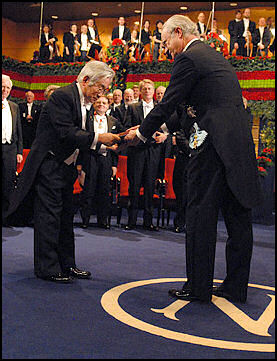
Masukawa accepts
his Nobel prize Even though Japan trains twice as many engineers and scientists as the United States and has made it a national goal to win Nobel prizes, Japan has won only 13 Nobel prizes in the sciences.
Shirakawa has been put in charge of developing a strategy to make Japanese science more innovative and help Japan win 30 Nobel prizes in the next 50 years The government funds research that is directly aimed at winning a Nobel Prize. About $100 million a year is spent on research aimed at clarifying unexplained phenomena and understanding macromolecules in cells, and developing nanotechnology and devises for measuring extremely small amounts of substances — fields that are seen a promising for winning a Nobel Prize.
Lack of money is clearly a problem. The English-language physics journal “Progress of Theoretical Physics” — founded by Japan’s first Nobel Prize winner, Yuwkawa, to disseminate research conducted in Japan and the journal that introduced the ideas that won the Nobel Prize in 1965 and 2008 — is in danger of closing because it in deeply in debt.
Some friction was created between Japan and Sweden over the establishment of “information office" in Sweden by the Japan Society for the Promotion of Science, essentially a Nobel-prize lobby group, and offers made to the Sweden's Nobel Foundation of an all expenses trip to Japan.
The Nobel Prizes in 2008 were a credit to Japanese brain power but were also a bit of slap in the face to Japanese educational institutions in that two of the Nobel prize winners — Nambu and Shimomura’spent their most productive years and the bulk of their careers at academic institutions in the United States: Nambu at the University of Chicago and Shimomura at Woods Hole. Esaki and Tonegawa also did the bulk of their work in the United States.
The two researcher that were based in Japan — Masukawa and Kobayashi — took the opportunity after receiving their awards to bash the Japanese education system: Masukawa expressed his dismay over the way that teachers encourage students to choose easy questions that do not require deep thought. Such methods, he told the Yomiuri Shimbun “are polluting education and creating people who don’t think for themselves...Authorized textbooks only contain the bare minimum required” to pass exams.
On differences on doing research in Japan and the United States, Noyori said, “There are many occasions to promote interaction among researchers from different fields in the United States. In Japan I had the impression that researchers tend to withdraw into their academic shells.”
Image Sources: Nobel Prize.org, Wikipedia
Text Sources: New York Times, Washington Post, Los Angeles Times, Daily Yomiuri, Times of London, Japan National Tourist Organization (JNTO), National Geographic, The New Yorker, Time, Newsweek, Reuters, AP, Lonely Planet Guides, Compton’s Encyclopedia and various books and other publications.
Last updated January 2013
